Protecting Pile Dwellings
The sites often lie hardly noticed on lakebeds or submerged in bogs, where they are exposed to a variety of threats: construction activities, drying soils, wave action and also tourism greatly affect pile-dwelling sites by erosion or physical destruction. Therefore, there is a possibility that what has survived for millennia will be lost in just a few decades. A regularly monitoring of the sites and the research of comprehensive solutions is necessary. The 'UNESCO World Heritage' label would increases public awareness of the special significance of the pile-dwelling sites and supports the effort made by the alpine countries to preserve, research and exhibit the world-famous cultural heritage preserved in the pre-alpine lakes.
protective measures …
Monitoring
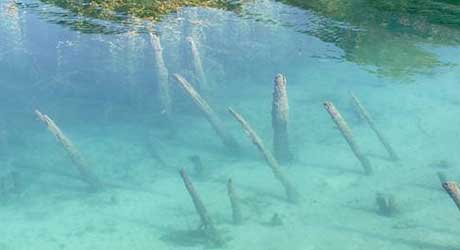
To gather data on the condition of the pile-dwelling sites and to put in place protection measures, several projects with an interdisciplinary approach to developing comprehensive solutions for archaeological remains have been launched.
In 2008 for example, German, Swiss and Austrian archaeologists and lake researchers set up an international project aimed at investigation the causes of erosion taking place at the Lakes of Constance and Zurich.
www.erosion-und-denkmalschutz-bodensee-zuerichsee.eu
… and dangers
Construction activities
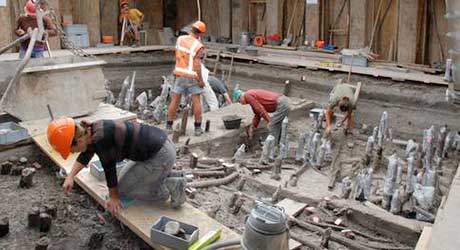
To manage the threat of modern construction and development, it is possible in urban areas to impose conditions such as a ban on constructing basements or to introduce a large-scale covering of the sites. Constructions on instable subsoil of the lakeshores are often reinforced with concrete piling, which can have a hugely detrimental effect on existing cultural layers. An agreement with the building owner to set the piles at greater distances but to make their diameter larger helps in such cases to preserve the cultural layers.
Drying soils
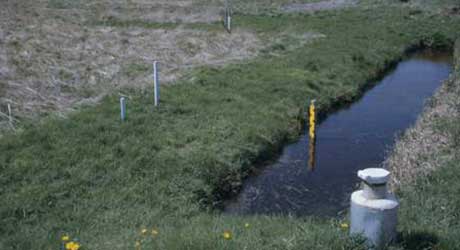
Boggy areas in particular are often drained and dried out so that farming can be pursued. The active measures used to prevent the sites from drying out are very difficult. Tangible and successful protection measures as for example wetland restoration should lead to a rising of the groundwater table and the archaeological layers being submerged under water.
There is a process currently on going where the groundwater table in various settlement areas is measured so that insight into monitoring system can be initiated.
Erosion and Wave Action
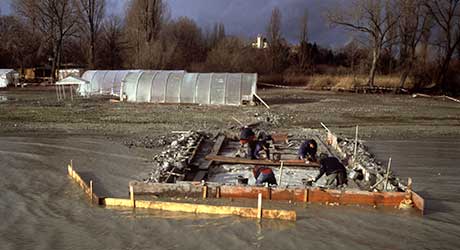
Unprotected sites can be seriously eroded by wave action. Its causes are varied: disappearance of the protective reed belts, increased water traffic and the artificial adjustment of the lake levels or even just inclement weather conditions like storms.
Protection measures must be put in place where archaeological layers are still present. There is the option to physically protecting threatened sites by covering them with specially modified textiles and gravel deposits or by erecting wooden fences in order to prevent the disappearance of the reed belts.
Tourism pressure
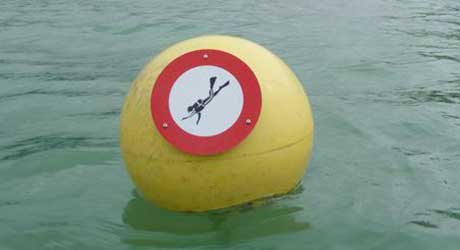
Underwater wave action created by the overuse of motor craft can put archaeological underwater sites in danger by causing erosion that is difficult to manage. Also highly problematic are buoys and ships whose anchor chains if installed incorrect, tear deep holes in the archaeological layers. For this reason, anchoring has been banned at several places.
Scuba divers must also be mentioned as a potential threat to underwater sites. If uninformed, they can cause damage to sites e.g. by dislodging posts or recovering objects from the lakebed. In Switzerland, Austria or Bavaria are offered special courses to sensitize hobby scuba divers to the fragility of the sites.





